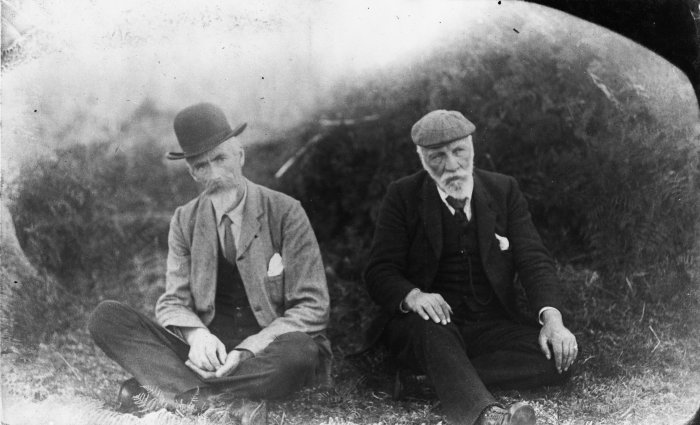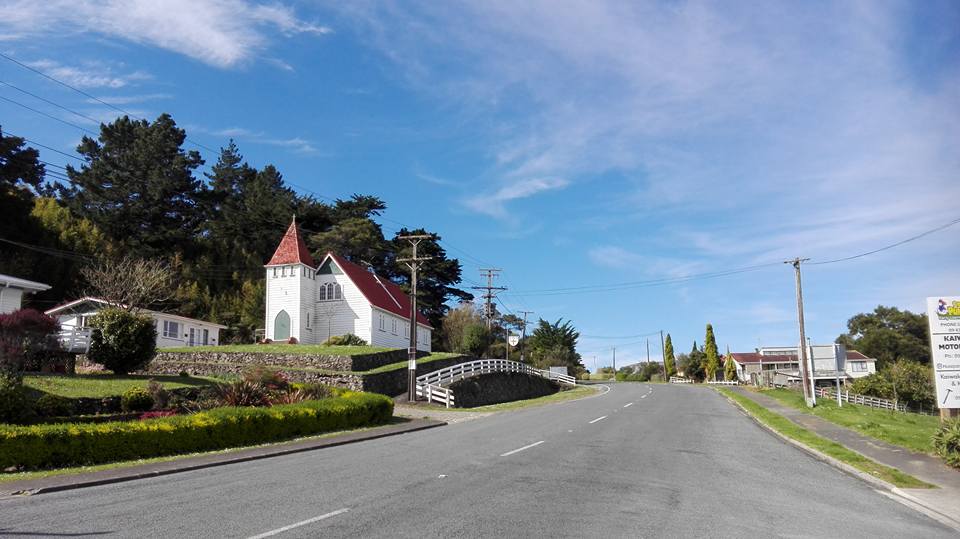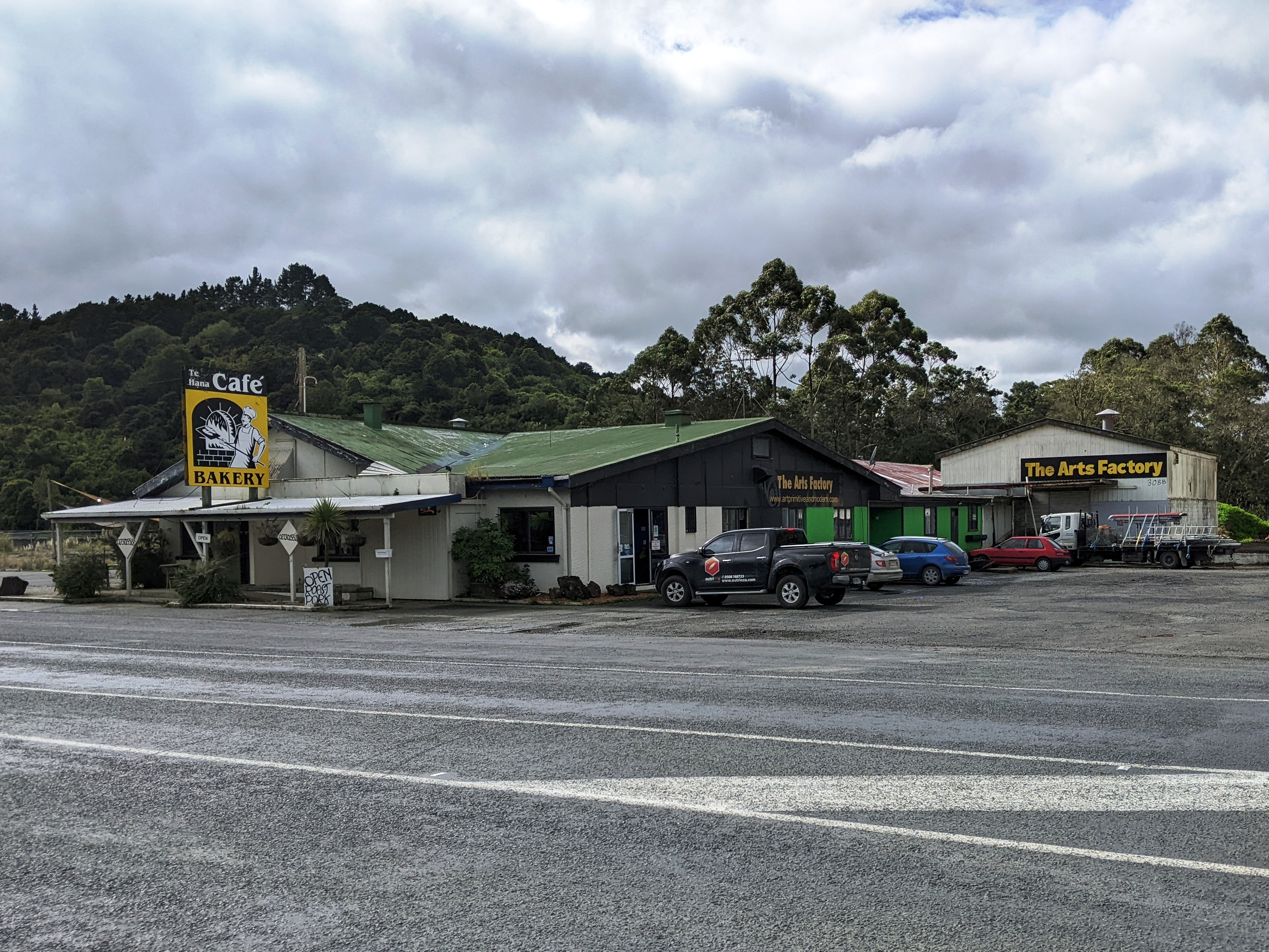|
Te Ārai
Te Ārai is a small community on the east coast of the North Island of New Zealand, near the northern end of the Auckland Region (specifically within the former Rodney District). Mangawhai lies to the north, and Tomarata to the south. The name of the suburb comes from Tāhuhunui-o-te-rangi, captain of the ''Moekākara'' waka, who landed here and set up a temporary shelter (''arai''). Tāhuhunui-o-te-rangi was later buried at Te Ārai. Te Ārai Beach is a sandy bottom beach and is a very popular surfing destination, rated one of the best surf locations in the Auckland region. 3 new golf courses have been built in the region named Te Arai Links and Tara Iti. Tourism and farming are the predominant activities in the area. Among the bird species found here is the critically endangered New Zealand fairy tern, of which only 11 breeding pairs are left in the world. Auckland Council owns Te Ārai Regional Park. Te Ārai Beach is the exact antipode of Gibraltar ) , anthem = ... [...More Info...] [...Related Items...] OR: [Wikipedia] [Google] [Baidu] |
New Zealand
New Zealand ( mi, Aotearoa ) is an island country in the southwestern Pacific Ocean. It consists of two main landmasses—the North Island () and the South Island ()—and over 700 smaller islands. It is the sixth-largest island country by area, covering . New Zealand is about east of Australia across the Tasman Sea and south of the islands of New Caledonia, Fiji, and Tonga. The country's varied topography and sharp mountain peaks, including the Southern Alps, owe much to tectonic uplift and volcanic eruptions. New Zealand's capital city is Wellington, and its most populous city is Auckland. The islands of New Zealand were the last large habitable land to be settled by humans. Between about 1280 and 1350, Polynesians began to settle in the islands and then developed a distinctive Māori culture. In 1642, the Dutch explorer Abel Tasman became the first European to sight and record New Zealand. In 1840, representatives of the United Kingdom and Māori chiefs ... [...More Info...] [...Related Items...] OR: [Wikipedia] [Google] [Baidu] |
North Island
The North Island, also officially named Te Ika-a-Māui, is one of the two main islands of New Zealand, separated from the larger but much less populous South Island by the Cook Strait. The island's area is , making it the world's 14th-largest island. The world's 28th-most-populous island, Te Ika-a-Māui has a population of accounting for approximately % of the total residents of New Zealand. Twelve main urban areas (half of them officially cities) are in the North Island. From north to south, they are Whangārei, Auckland, Hamilton, Tauranga, Rotorua, Gisborne, New Plymouth, Napier, Hastings, Whanganui, Palmerston North, and New Zealand's capital city Wellington, which is located at the south-west tip of the island. Naming and usage Although the island has been known as the North Island for many years, in 2009 the New Zealand Geographic Board found that, along with the South Island, the North Island had no official name. After a public consultation, the board officially ... [...More Info...] [...Related Items...] OR: [Wikipedia] [Google] [Baidu] |
Gibraltar
) , anthem = " God Save the King" , song = " Gibraltar Anthem" , image_map = Gibraltar location in Europe.svg , map_alt = Location of Gibraltar in Europe , map_caption = United Kingdom shown in pale green , mapsize = , image_map2 = Gibraltar map-en-edit2.svg , map_alt2 = Map of Gibraltar , map_caption2 = Map of Gibraltar , mapsize2 = , subdivision_type = Sovereign state , subdivision_name = , established_title = British capture , established_date = 4 August 1704 , established_title2 = , established_date2 = 11 April 1713 , established_title3 = National Day , established_date3 = 10 September 1967 , established_title4 = Accession to EEC , established_date4 = 1 January 1973 , established_title5 = Withdrawal from the EU , established_date5 = 31 January 2020 , official_languages = English , languages_type = Spoken languages , languages = , capital = Westside, Gibraltar (de facto) , coordinates = , largest_settlement_type = largest district , l ... [...More Info...] [...Related Items...] OR: [Wikipedia] [Google] [Baidu] |
Te Ārai Regional Park
Te Ārai Regional Park is a regional park situated in the Auckland Region of New Zealand's North Island. It is owned and operated by Auckland Council. Geography Te Ārai Regional Park has the largest number of sand dunes in the Auckland Region. The park is a long stretch of coastline in Rodney, between the most northern point of the Auckland Region on the North Island and the Poutawa Stream. The park is bordered by the Mangawhai Forest. An 85 metre high headland also known as Te Arai is found in the park. Biodiversity The Te Ārai sand dunes are a regionally significant biodiversity area, adjoining the Pākiri Dunes biodiversity focus area to the south. The park is one of the few remaining breeding areas for the New Zealand fairy tern. The endangered katipō spider is found in the regional park. The spiders that live in the regional park are typically black in colour, and do not have the distinctive red markings typically seen on katipō. History During the 1930s, pine trees ... [...More Info...] [...Related Items...] OR: [Wikipedia] [Google] [Baidu] |
New Zealand Fairy Tern
The New Zealand fairy tern or tara-iti (''Sternula nereis davisae'') is a subspecies of the fairy tern endemic to New Zealand. It is New Zealand's rarest native breeding bird, with about 40 individuals left in the wild. It nests at four coastal locations between Whangarei and Auckland in the North Island. It is threatened by introduced predators, extreme storms and tides, beach activity, and waterfront development. Taxonomy and systematics The New Zealand fairy tern is currently considered a subspecies of the fairy tern (''Sternula nereis).'' Two other subspecies exist: ''Sternula nereis nereis'', which breeds in western and southern Australia, and ''S. n. exsul'', which breeds in New Caledonia. Fairy terns were first described from the Bass Strait in Australia in 1843. The New Zealand species was first identified by Dunedin naturalist Thomas Potts in the Rakaia riverbed in Canterbury; it was breeding in the Rakaia Gorge. He noted there were already two specimens in the co ... [...More Info...] [...Related Items...] OR: [Wikipedia] [Google] [Baidu] |
The Journal Of The Polynesian Society
The Polynesian Society is a non-profit organisation based at the University of Auckland, New Zealand, dedicated to the scholarly study of the history, ethnography, and mythology of Oceania. History The society was co-founded in 1892 by Percy Smith and Edward Tregear, largely in response to a conviction, widely held at the time, that the Māori and other Polynesian peoples were a dying race. Smith and his friends hoped that it would help to preserve the traditional lore of the Māori before it disappeared and provide scholars with a forum for learned discussion of their ethnographic research (Byrnes 2006). The initial membership of the society was 112, which had grown to 1,300 by 1965. Presidents have included bishops H. W. and W. L. Williams; James Pope, Edward Tregear, Percy Smith, Elsdon Best, William Skinner, Sir Āpirana Ngata, Harry Skinner, J. M. McEwen, Professor Sir Hugh Kawharu and Dame Joan Metge. The present president is Dr Richard Benton. Until her death in ... [...More Info...] [...Related Items...] OR: [Wikipedia] [Google] [Baidu] |
Moekākara
In Māori tradition, ''Moekākara'' was one of the great ocean-going, voyaging canoes that was used in the migrations that settled New Zealand. It was captained by Tāhuhunui-o-te-rangi, the ancestor of Ngāi Tāhuhu. The canoe first landed at Wakatuwhenua, near Te Arai north of Auckland. Ngāi Tāhuhu settled at Pouerua in the Bay of Islands and the Mangakahia River in Northland, as well as Ōtāhuhu (on Mount Richmond) in Auckland. See also *List of Māori waka A ''list'' is any set of items in a row. List or lists may also refer to: People * List (surname) Organizations * List College, an undergraduate division of the Jewish Theological Seminary of America * SC Germania List, German rugby union ... References Māori waka Māori mythology {{Māori-myth-stub ... [...More Info...] [...Related Items...] OR: [Wikipedia] [Google] [Baidu] |
Rodney District
Rodney District was a local government area in the northernmost part of New Zealand's Auckland Region from 1989 to 2010. It included Kawau Island. It was created from the amalgamation of Helensville, Helensville Borough and Rodney County, New Zealand, Rodney County in 1989. The seat of Rodney District Council was at Orewa. Rodney District and Rodney County each took their names from Cape Rodney (opposite Little Barrier Island), which Captain James Cook named on 24 November 1769 after Admiral Sir George Brydges Rodney, 1st Baron Rodney, George Brydges Rodney. Auckland Council has governed the area since 1 November 2010. The Rodney ward of the Auckland Region now covers much of the land area, but not the Hibiscus Coast or the former council seat of Orewa, which are in the Albany ward (local government), Albany ward. The district was, in the final electoral term (2007–2010) of its existence, led by mayor Penny Webster and 12 councillors. Mayors During its 21-year existence, Rodn ... [...More Info...] [...Related Items...] OR: [Wikipedia] [Google] [Baidu] |
Kaiwaka
Kaiwaka "the little town of lights" is a settlement in Northland, New Zealand. The Kaiwaka River runs from the east through the area and joins with the Wairau River to form the Otamatea River, which drains into the Kaipara Harbour. State Highway 1 passes through Kaiwaka. Wellsford is 20 km south, Brynderwyn is 8 km north and Whangarei the closest city, being 60 km (45 minutes drive) north. The Mangawhai Heads are 18 km north east. The New Zealand Ministry for Culture and Heritage gives a translation of "eating the canoes" for ''Kaiwaka''. The reference to food and canoe may reflect the historic Mangapai portage route between Kaiwaka and Mangawhai linking the East coast with the Kaipara Harbour. Local tradition also speaks of a cloud that is only observed in this part of the Kaipara. It is seen as an omen that a high ranking person is about to pass on. ''He kapua pōuri ngā kaiwaka kei runga i te paerangi. He tohu aituā tēnei (Te Ara 2015).'' / Kaiw ... [...More Info...] [...Related Items...] OR: [Wikipedia] [Google] [Baidu] |
Auckland Region
Auckland () is one of the sixteen regions of New Zealand, which takes its name from the eponymous urban area. The region encompasses the Auckland Metropolitan Area, smaller towns, rural areas, and the islands of the Hauraki Gulf. Containing percent of the nation's residents, it has by far the largest population and economy of any region of New Zealand, but the second-smallest land area. On 1 November 2010, the Auckland region became a unitary authority administered by the Auckland Council, replacing the previous regional council and seven local councils. In the process, an area in its southeastern corner was transferred to the neighbouring Waikato region. Geography On the mainland, the region extends from the mouth of the Kaipara Harbour in the north across the southern stretches of the Northland Peninsula, through the Waitākere Ranges and the isthmus of Auckland and across the low-lying land surrounding the Manukau Harbour, ending within a few kilometres of the mouth o ... [...More Info...] [...Related Items...] OR: [Wikipedia] [Google] [Baidu] |
Te Hana
Te Hana is a small town on near the northern boundary of Auckland. Wellsford is to the south, and Kaiwaka is northeast. Te Hana Creek runs westward on the northern end of the town to the Kaipara Harbour. History The town gained a post office in 1871. A school flourished in Te Hana in the early 20th century. The Port Albert Co-operative Dairy Company replaced its factory in Port Albert, New Zealand, Port Albert with a more substantial one in Te Hana in 1934. The dairy factory was the town's major employer until it closed in 1987. After it closed Te Hana declined, with a high crime rate, unemployment of 20%, significant substance abuse, and poor living conditions. Te Hana Community Charitable Development Trust was formed in 2002 to rejuvenate the town, with one of its major initiatives a Māori cultural centre to attract tourists with a recreation of a pre-European Māori village. Demographics Statistics New Zealand describes Te Hana as a rural settlement, which covers . Te ... [...More Info...] [...Related Items...] OR: [Wikipedia] [Google] [Baidu] |
Wellsford
Wellsford (Māori: ''Whakapirau'') is a town on the Northland Peninsula in the northern North Island of New Zealand. It is the northernmost major settlement in the Auckland Region, and is 77 kilometres northwest of the Auckland CBD. Wellsford is close to a narrowing of the Northland Peninsula caused by an arm of the Kaipara Harbour on the west coast extending inland for 20 kilometres from the body of the harbour, stretching to within 15 kilometres of the east (Pacific Ocean) coast. It is a major regional centre, being located at the junction of State Highways 1 and 16, almost halfway between Auckland and the Northland city of Whangārei. It is on the North Auckland Line railway, which has been goods-only since the last regular passenger service ceased in 1975. It is the rural service town for the local areas of Tauhoa, Tapora, Wharehine, Port Albert, Te Hana, Tomarata, Te Arai, Whangaripo and Pakiri. The local Ōruawharo Marae is a traditional meeting ground for Te Uri o Ha ... [...More Info...] [...Related Items...] OR: [Wikipedia] [Google] [Baidu] |


.jpg)



